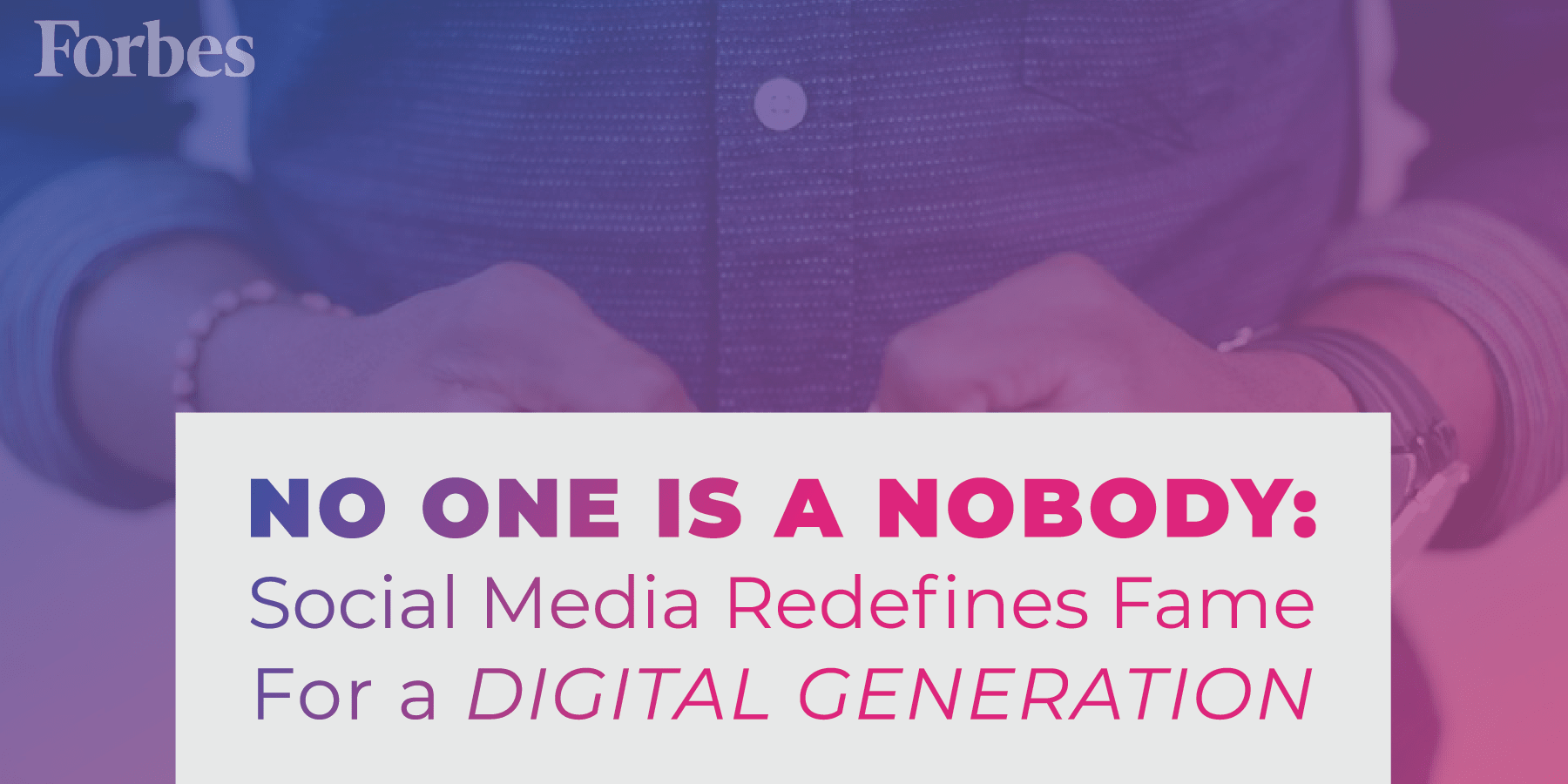Have you been famous yet?
When Andy Warhol predicted that in the future everyone would be famous for 15 minutes, the audacity of this idea was rooted in its impossibility. Becoming famous in the 1970s took years of effort by studios, labels, producers, agents and managers. Magazine covers and marquees could support only so many names at a time. An entire gatekeeping industry formed between the star and the audience. All communication was programmed for and channeled through broadcast media.
For decades, fame, as a phenomenon, was one-dimensional and one-sided. Fifteen minutes? Forget about it. Stars and fans seemed to maintain their place and distance for life. By the mid-1990s, a new informational era has dawned with the introduction of the internet to the public. Social media further democratized the communications field.
Today fame is for everyone. Let me explain.
Social media has turned everyone into a content creator.
From selfies to reviews to original content, the media entry point has never been wider. Anyone can instantly access any corner of the world through social media. A cool idea delivered in a fitting format is bound to resonate. Rob Kenney uploaded his first YouTube video on April 2, 2020; it was a two-minute tie-tying tutorial. He grew up without a positive father figure and wanted to share “dad-vice” with kids in similar circumstances. The series “Dad, How Do I?” went viral within weeks on a promo budget of zero dollars. Half a year later, his channel has 2.8 million viewers. In broadcast terms, that’s new-HBO-series kind of numbers. This creates organic opportunities for brand engagement. Everyone has something worth sharing and the digital audience is proactive in embracing relevant content. Social media platforms allow you to bypass the maze of gatekeepers and just go for it.
Fame today is a multidimensional two-way highway.
The celebrity community used to be an insular space with virtually no access for the public, except as consumers of prepackaged, prescheduled content. Life of stars was subject to fantasies. In 2002, US Weekly began its column “Stars — They’re Just Like Us,” and we have been getting closer ever since. Now a shout-out from your icon is not unheard of. Over the summer, Missy Elliott launched a viral dance challenge. She reposted daily favorites to her 4-million-strong audience, giving some talented fans a sizable follower boost.
Brands could benefit from aligning their influencer marketing strategies to these current events and achieve great success. Sometimes tables can turn unexpectedly. A potato farmer from Idaho, Nathan Apodaca skateboarded to work while sipping Ocean Spray cranberry juice and listening to Dreams by Fleetwood Mac. The cool video took TikTok by storm, prompting Mick Fleetwood himself to join the app and post an homage to his fan. In the post-celebrity era, fame is a constant renegotiation, an active dialogue where stars are happy to share the spotlight.
Trust, not popularity, determines and drives influence.
In retrospect, “old fame” was based on popularity alone, which was measured in bulk. The algorithm of social validation has radically changed the “new fame” metric. Repeated engagement is driven by trust in the consistent quality of content. Faced with unlimited sources of information, we prioritize personal trust of generic popularity. This has disrupted certain media segments for good. For example, financial advice used to rely on a few broadcast personalities such as Suze Orman or Jim Cramer of Mad Money. Now many financial influencers operate on platforms as divergent as LinkedIn, Facebook or TikTok. Social capital is also built over time.
Even with over eight hundred thousand Twitter followers, photographer Brandon Stanton is hardly a household name. However, he is responsible for one of the most inspiring 2020 social media success case studies. His documentary project Humans of New York has been sharing moving personal stories of city residents since 2010. In September, Stephanie “Tanqueray” Johnson, a 76-year-old former burlesque dancer, was featured in a series of posts that went viral. Stanton launched his first GoFundMe campaign to secure a subject’s living expenses. The Tanqueray Trust raised a staggering $2.5 million in small donations. A decade of trust in the content creator translated into decisive action from the cultivated audience. Brands can learn loyalty and longevity strategies from this.
The key to fame is no longer appearance, but authenticity.
It turns out, the first social generation does not care about social status. It craves shared experiences. Empathy and authenticity top the millennial values charts. For example, that skateboarding TikTok sent downloads of a featured Fleetwood Mac track up 374% because it was admittedly so cool and in the moment. Similarly, when Tim and Fred Williams listened to Phil Collins’ “In the Air Tonight” for the first time in August, it was the raw enthusiasm for a beloved 1980s hit that made their reaction video go viral, boosting track sales over 1,000%. “Ordinary” content creators, not record labels or radio conglomerates, can dictate the charts now. When Rickey Thompson started posting his high-spirited “rants” on Vine, people could not figure him out. Was he a comedian, a prankster, an anti-bullying activist? His unabashed antics inspired millions of followers, and he recently launched a show on Spotify, with a billboard in Times Square. Authenticity pays and pays off.
With no gatekeepers in the way of delivering quality content and plenty of platforms to tailor your format, more and more people (and by extension brands) can have an equal shot at achieving renown. Whether it lasts 30 seconds, 15 minutes or a lifetime is up to the content creator’s willingness to maintain their authenticity. The new fame is a labor of love in progress.






